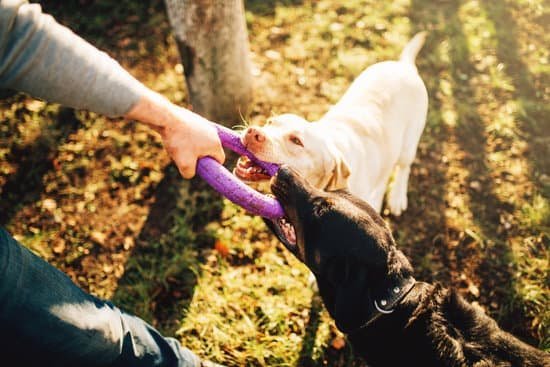What age dog obedience training is a crucial consideration for pet owners. The training of a dog should always be a top priority and may have an impact on the success of the process itself. Obedience training is more than just teaching your dog to obey commands; it’s about establishing a strong bond and communication between you and your furry friend.
Training your dog can start at any age, but starting early in puppyhood is ideal. Young dogs are like sponges, readily absorbing new information and experiences, making it the perfect time to instill good behavior and habits. However, this does not mean that older dogs cannot be trained. In fact, adult and senior dogs also benefit greatly from obedience training.
In this article, we will explore the different stages of dog obedience training, from puppyhood to senior years, and discuss the challenges, opportunities, techniques, and benefits associated with each stage. Additionally, we will address when it may be necessary to seek professional help for obedience training.
Whether you’re a first-time pet owner or looking to improve the behavior of your current furry companion, understanding the importance of dog obedience training is essential for a harmonious relationship with your canine companion.
Puppyhood
When it comes to what age dog obedience training should start, it’s generally recommended to begin as early as 7-8 weeks old. At this stage, puppies are able to start learning basic commands such as sit, stay, come, and walking on a leash. The key is to keep training sessions short and positive, using rewards like treats or praise to reinforce good behavior.
- Start with basic commands such as sit, stay, come and walking on a leash
- Keep training sessions short and positive
- Use rewards like treats or praise to reinforce good behavior
As a dog owner, investing time and effort into obedience training during puppyhood can set the foundation for a well-behaved and disciplined adult dog. It’s important for puppies to socialize with other dogs and people during this crucial developmental stage as well. In addition, enrolling in puppy kindergarten classes can be beneficial for both socialization and basic training skills. Ultimately, starting obedience training at an early age can lead to a happy and well-adjusted canine companion.
Adolescent Dogs
When it comes to dog obedience training, many pet owners may find that adolescent dogs present unique challenges. During this stage of a dog’s life, they are no longer puppies but have not yet reached full maturity. This can lead to behaviors such as testing boundaries, increased energy levels, and a decreased attention span. Despite these challenges, however, adolescence is also an important opportunity to further reinforce obedience training and establish a strong foundation for your dog’s behavior.
Here are some common challenges that arise during the training of adolescent dogs:
- Testing Boundaries: Adolescent dogs may test their limits and push boundaries in order to assert their independence.
- Increased Energy Levels: This age group often has excess energy that needs to be properly channeled through exercise and mental stimulation.
- Decreased Attention Span: Adolescents may struggle with maintaining focus during training sessions.
Despite these challenges, adolescent dogs also present unique opportunities for growth and learning. With the right approach and consistency, pet owners can make significant progress in their dog’s obedience training during this developmental stage.
Training techniques such as positive reinforcement and consistent practice can help address the challenges of adolescence while taking advantage of the opportunities for growth. It is important for pet owners to remain patient and understanding while working with their adolescent dogs, as this stage is a crucial time for shaping their behavior and setting them up for success in the future.
Adult Dogs
When it comes to obedience training, many dog owners wonder if it’s too late to start training their adult dogs. The truth is, while it may be a bit more challenging to train an older dog compared to a puppy, it is definitely not too late. Adult dogs are still capable of learning and adapting to new behaviors, and with patience and consistency, they can become well-behaved and obedient pets.
Challenges of Training Adult Dogs
One of the main challenges of training adult dogs is breaking old habits. Dogs that have not received proper training in their earlier years may have developed undesirable behaviors that are deeply ingrained. It may take time and effort to unlearn these habits and replace them with new, desirable behaviors.
Benefits of Training Adult Dogs
Despite the challenges, there are also several advantages to training adult dogs. They generally have longer attention spans compared to puppies, which can make certain aspects of training easier. Adult dogs also tend to be calmer and more focused, making it possible for them to learn commands and concepts more quickly than younger pups.
It’s important for dog owners not to give up on obedience training just because their dog is no longer a puppy. With the right approach and dedication, adult dogs can still benefit greatly from obedience training. Whether it’s teaching basic commands or addressing behavioral issues, taking the time to work with an older dog can lead to a happier and more harmonious relationship between the pet and its owner.
Senior Dogs
When it comes to dog obedience training, senior dogs may require a different approach compared to puppies and adolescent dogs. It’s important to understand that older canines may have physical limitations or health issues that need to be taken into consideration when implementing training methods.
One key aspect of training senior dogs is to adjust the intensity and duration of the training sessions. Unlike younger dogs, older canines may not have the same level of energy and stamina. Therefore, shorter and more frequent training sessions are recommended. Additionally, it’s essential to choose training exercises that are gentle on their joints and suitable for their age.
In terms of obedience training techniques, positive reinforcement is particularly effective for older dogs. Using treats or verbal praise as rewards can motivate them to learn new behaviors or commands. It’s also important to be patient and understanding, as senior dogs may take longer to grasp new concepts or may need more repetition. Finding the right balance between challenging them and being compassionate is crucial in their training process.
| Training Method | Recommendation |
|---|---|
| Positive Reinforcement | Effective for motivating senior dogs in learning new behaviors. |
| Shorter Training Sessions | Recommended due to reduced energy and stamina in older canines. |
| Gentle Exercises | Important to prevent strain on their joints and muscles. |
Common Obedience Training Techniques and Methods
Training a dog to be obedient is essential for a happy and harmonious relationship between you and your furry friend. There are several common obedience training techniques and methods that can help you achieve this goal.
Positive Reinforcement
One of the most popular and effective training methods is using positive reinforcement. This involves rewarding your dog with treats, praise, or toys when they exhibit the desired behavior. Positive reinforcement helps to create a strong bond between you and your dog, as well as motivate them to continue obeying commands.
Clicker Training
Clicker training is another widely used technique where a small clicking device is used to mark the moment your dog performs the correct action. This method helps to clearly communicate with your dog when they have followed a command correctly, making it easier for them to understand what is expected of them.
Behavioral Training
Behavioral training focuses on correcting specific behavioral issues such as excessive barking, jumping up on people, or pulling on the leash. By identifying the root cause of these behaviors and implementing appropriate training techniques, you can effectively modify their conduct.
These are just a few examples of the many obedience training techniques available. It’s important to find the method that works best for your dog’s personality and temperament, as every canine companion is unique in their learning style and abilities.
The Benefits of Early and Consistent Training for Dogs
Dog obedience training is essential for the well-being and happiness of your furry companion. Starting obedience training at a young age has numerous benefits for both you and your dog. The best age to start obedience training is during the puppyhood stage, typically around 8-16 weeks old. At this age, puppies are most receptive to learning and can easily adapt to new behaviors and commands.
Early and consistent obedience training helps in preventing behavioral issues such as excessive barking, biting, chewing, jumping, and aggression. It also establishes a strong bond between you and your dog, as it teaches them to trust and respect you as their leader. Additionally, early training sets the foundation for more advanced behaviors and commands as they grow older.
Consistency is key when it comes to dog obedience training. It’s important to practice positive reinforcement techniques consistently throughout the day in short sessions. This will create a routine for your dog and help reinforce good behavior. Furthermore, early training can prevent future struggles with behavioral problems in adult dogs.
According to professional dog trainers, starting obedience training at a young age not only benefits the dog but also makes it easier for owners to establish control over their pets. Consistent training from an early age sets the stage for long-term success in shaping positive behaviors in dogs.
Knowing When to Seek Professional Help for Dog Obedience Training
In conclusion, understanding when to seek professional help for dog obedience training is crucial in ensuring the success of your canine companion’s training. While many dog owners can successfully train their pets at home, there are instances where professional intervention may be necessary. Factors such as the age of the dog, the behavior issues being addressed, and the owner’s level of experience all play a role in determining when professional help is needed.
For some owners, especially those dealing with challenging behavior problems or older dogs, seeking the expertise of a professional dog trainer or behaviorist can make a significant difference in achieving desired results. They have the knowledge and experience to implement specialized training techniques tailored to your dog’s specific needs. Furthermore, they can provide valuable guidance and support to you as the owner, empowering you with the skills to continue training effectively at home.
Frequently Asked Questions
What Age Should You Start Dog Obedience?
It is recommended to start dog obedience training as early as 7-8 weeks old. This is the age when puppies are most receptive to learning and adjusting to new experiences, making it an ideal time to start training.
At What Age Are Dogs Most Trainable?
Dogs are most trainable between the ages of 7 weeks to 4 months old. During this stage, their brains are like sponges, absorbing information and forming habits quickly. This makes it the ideal time for basic obedience training.
What Is the Hardest Age to Train a Dog?
The hardest age to train a dog is typically around adolescence, which is between 6 months to 2 years old. During this stage, dogs may become more rebellious, independent, and easily distracted, making training more challenging. Consistency and patience are key during this phase of their development.

Welcome to the blog! I am a professional dog trainer and have been working with dogs for many years. In this blog, I will be discussing various topics related to dog training, including tips, tricks, and advice. I hope you find this information helpful and informative. Thanks for reading!





